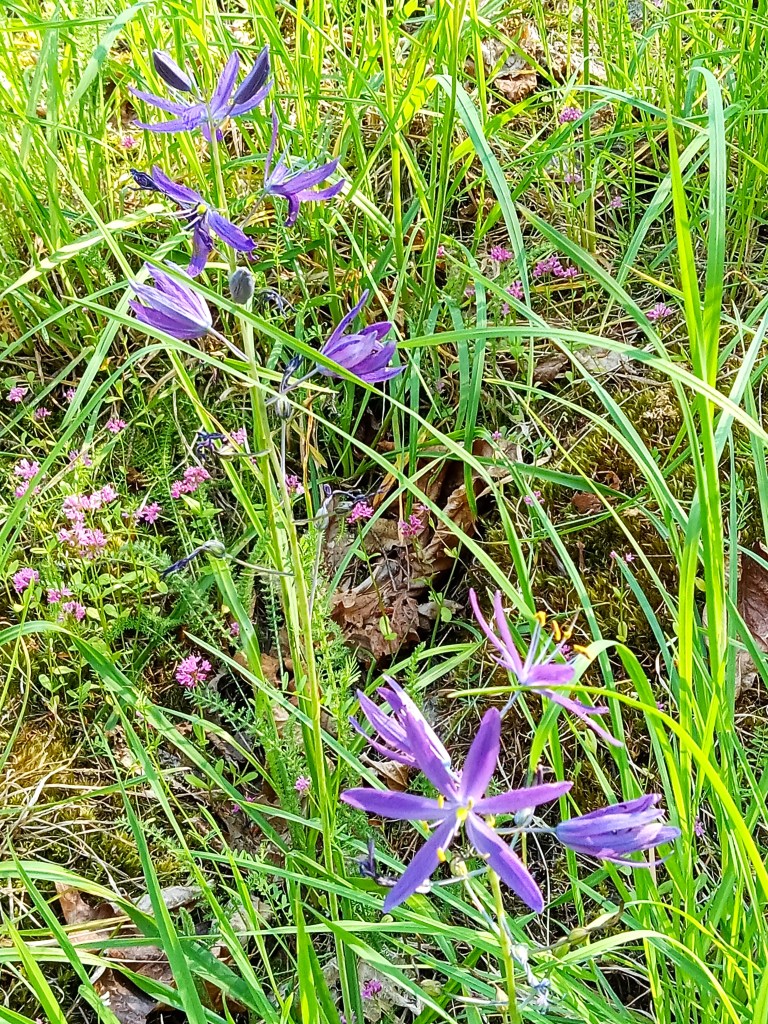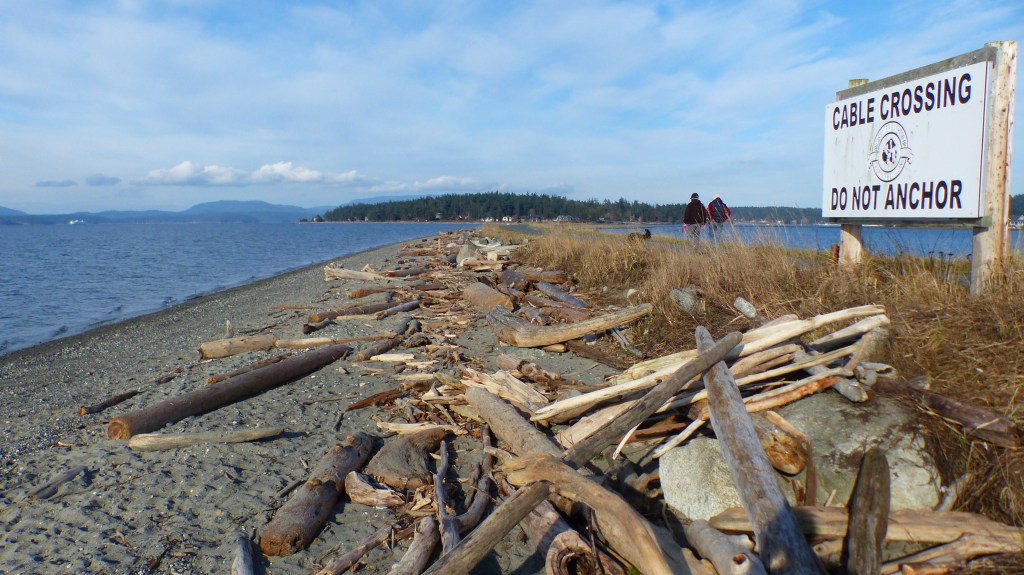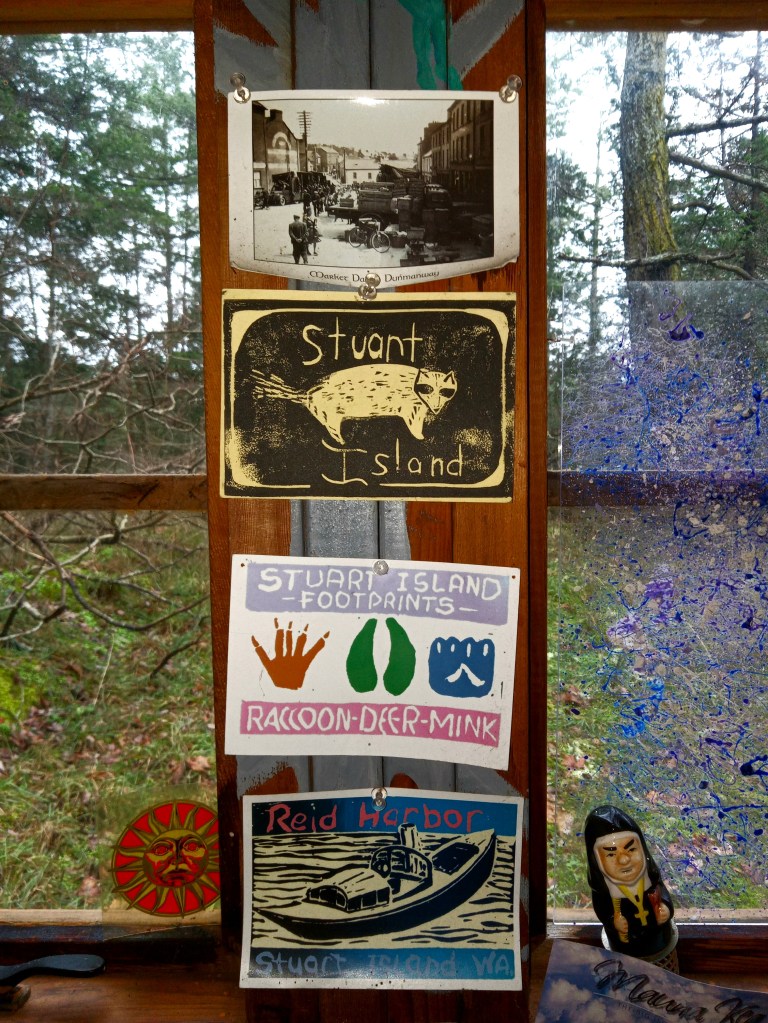

WHEN YOU LIVE ON A REMOTE ISLAND with no shops or garbage pick-up, all your groceries must be transported up a dock and all your trash gets packed the other way. You really come to appreciate a good dock cart.
Anybody who’s had a boat in a marina knows of what I speak: the boxy two-wheeled conveyances with tires the size of a small bicycle’s, usually pushed by a large, U-shaped metal handle. Often capable of carrying two Rubbermaid totes and maybe a Trader Joe frozen-food bag. They do their job handily. No big deal.
But when the cart comes in a large, economy size, carrying two additional totes and maybe a couple of 5-gallon gas cans as well, you fall in love. Such Cadillacs of conveyance halve your required treks up and down the dock ramp, which on a minus tide can almost require ropes and a belaying harness. If you’ve just arrived home from a Costco run, kitted out with a six-month supply of pasta and several half-gallon jars of Adams peanut butter, the unashamed among us dash off the water taxi, pass up the “normal”-size carts and nab the stretch-limo of grocery transport.
For years, Center Island’s “A” Dock has had such a cart. For years, it has been slowly falling to pieces.
The big cart was home-built long ago of thin plywood. Had the cart ever seen stain or paint, such protectants had long ago thrown in the towel against Northwest winters and retired to Arizona. The plywood’s raw, gray edges had started shredding like store-bought hash browns. On parts of the metal chassis, rust was holding the rust together. Our island’s caretaker kept up a brave campaign of replacing nuts and bolts, evidenced by shiny bits of metal among the oxidized. But as of late the cart’s front panel was falling out, threatening to dump into Read’s Bay one’s warehouse-store flagon of Mrs. Butterworth’s or body bag of Cap’n Crunch.

For ease of reference here, we’ll call the big cart Otto (preferred pronouns: “It” and “Its”). Last fall, with winter looming, on a whim I asked Center Island caretaker Rich if I might tackle an Otto rebuild over the cold, long months ahead. It would be something to do, of benefit to me and all my neighbors. Rich enthusiastically nodded.
Then, you know how things go. I got busy. A bunch of holidays came along. Winter was shorter than usual, I’m certain of it. By April, Caretaker Rich had announced a pending move to another island, where pay was better and duties lighter. (These remote islands-nobody’s-heard-of can be cutthroat when it comes to poaching caretakers.)
Meanwhile, Otto was a wreck. Nuts were rusting to dust. L-braces once holding panels together twirled loosely as screws gave way. I felt bad I hadn’t fulfilled my aspiration and hated for Rich to depart thinking me a slacker. In late April, I queried him if I could take Otto out of service for a couple of weeks and proceed with the makeover. The nod was even quicker.
I wasn’t talking about a refresh. That elderly plywood needed full replacement. I hoped enough of the metal chassis would be reusable once sanded and given new coats of Rust-Oleum.
With gorgeous spring weather arriving, I loaded Otto into an island truck and transplanted it cross-island to the deck outside Nuthatch Cabin. Outfitted in my grubbiest old paint-splattered jeans and T-shirt, like a surgeon’s scrubs after 48 hours of brain surgery, I began the dissection.
With a can of WD-40 at my elbow, I twiddled and twisted, grunted and groaned. I removed a brimming jarful of old nuts, bolts and washers, which I set aside for triage as to possible reuse. Several bolts sheared off with a flick of my socket wrench. A saltwater environment does that.
The old plywood I set aside for a trip to the Lopez Island dump.
It was a 10-day project, involving three boat trips to the Lopez hardware store/lumberyard. The new plywood was $70. The dump bill, $15. The new nuts and bolts added up quickly, plus about eight cans of spray paint. Otto’s rusty u-shaped handle – already splinted in two places – was a write-off so I hopped on Amazon and ordered a new 1½-inch-diameter aluminum handle made by a manufacturer of industrial hand trucks.
Once Otto’s old metal frame was fully exposed, two corners looked like the work of rust-spewing moths – with more holes than solid surface. I fired up the Sawzall and excised those ends with a few moments of shrieking metal-saw demolition. With sharp edges sanded away, enough solid framing remained to support the cart. The axle and wheels were in good shape.
I painted the new wood in appetizing tones of green – “sage” and “oregano” – and tacked protective rubber edging to the plywood’s perimeter. Metal parts were sanded and sprayed with a rust-transforming undercoat topped by a rust-blocking Hunter-green enamel. To guard against theft, Caretaker Rich suggested I label the cart, which usually means scrawling it with the letters “CIA” (for Center Island Association). I chose to make it friendlier, daubing “Welcome to Center Island” on the end panel. Affixing our island’s name decreases the chance that Otto gets pirated to a neighboring port.
The last step was to install the hefty aluminum handle. Finally, without ceremony, last Friday I deposited the rebuilt cart at the head of A dock, ready for a new lifetime of grocery grunting and trash toting.
All seemed good. Then, Saturday afternoon, when neighbors joined me for a sun-drenched happy hour on the Nuthatch’s deck, I learned that another friend had a hair-raising mishap with the rebuilt cart. As he wheeled three heavy bags of trash down the steep dock ramp during an extreme low tide, the cart’s new handle worked free from its metal anchor loops. The loaded cart careened down the ramp.
Thank god, the ramp was clear. Nobody was hurt. Nothing ended up in the bay.
Another islander had subsequently reattached the handle to its anchor loops with metal screws, whereas I had relied on pressure from neoprene firmly packed inside the straps. The neoprene gave a solid seal with no wobble, fine for use on level ground but apparently not up to heavy loading on a precipitous ramp. Oops.
I tossed and turned that night, haunted by the fact that my good deed nearly ended in disaster. Finally, I set an alarm for early rising and resolved to inspect the cart first thing Sunday, with tools in hand.
By 7:30 I was in the island workshop adding two more anchor straps to the cart’s handle, satisfied that the unidentified Samaritan’s repair job looked good but convinced that overkill wasn’t bad in this case. While at it, I added half a dozen more bolts and an extra L-brace to reinforce the cart at every edge. Once bitten…
As the rebuilt cart has gotten more use, neighbors have voiced smiling appreciation. It’s the island way. Many pitch in to keep life chugging along on our little rock.
And saving extra trips up the dock with my Costco hauls will keep me smiling, too.





































